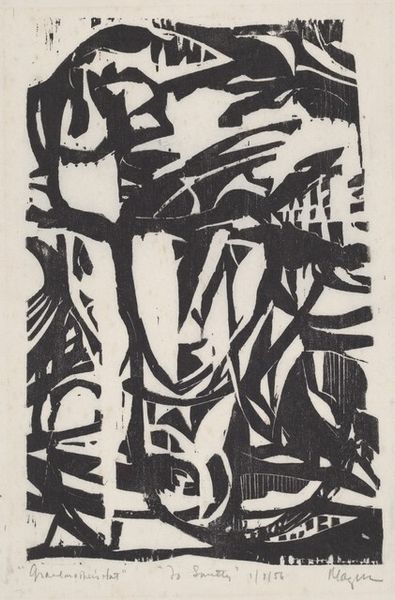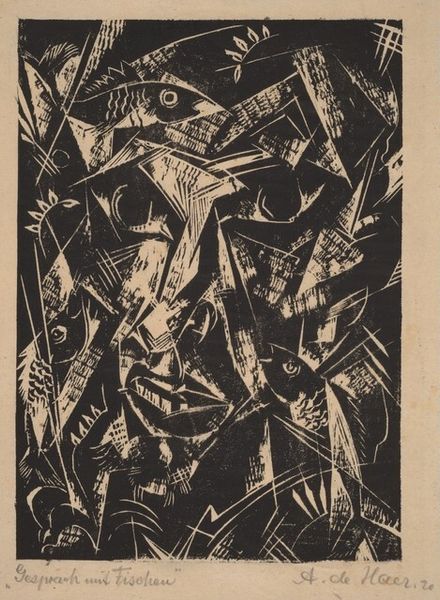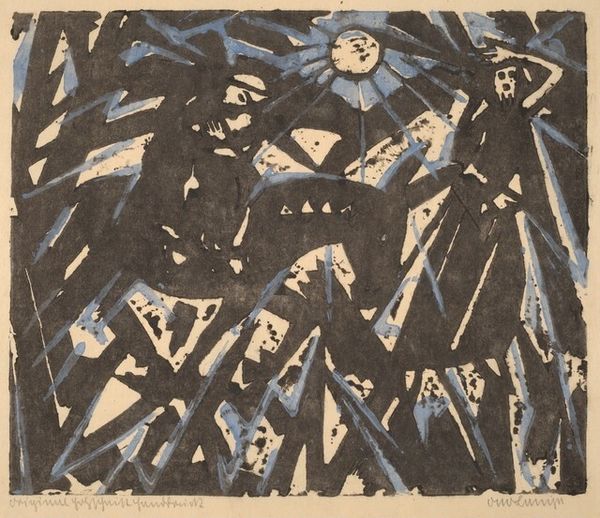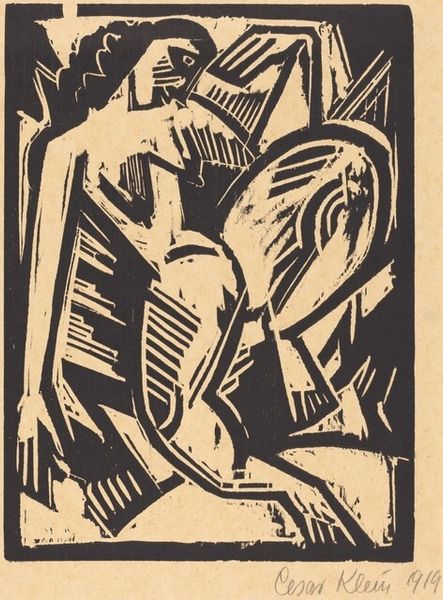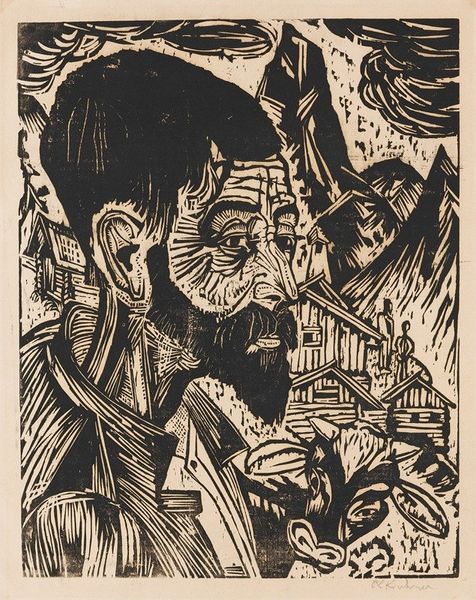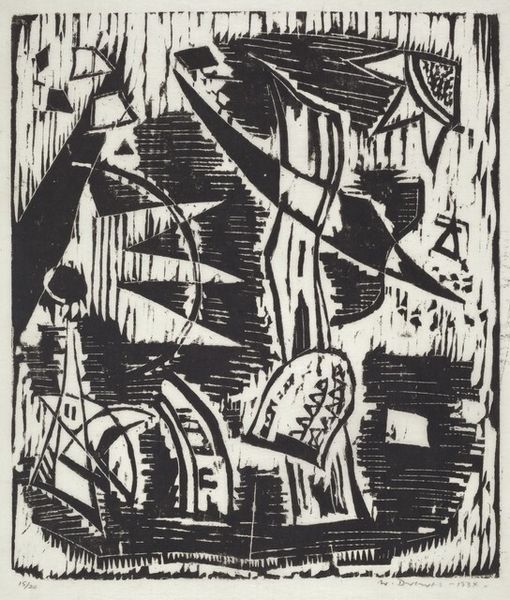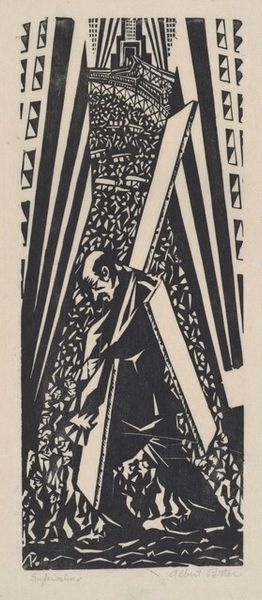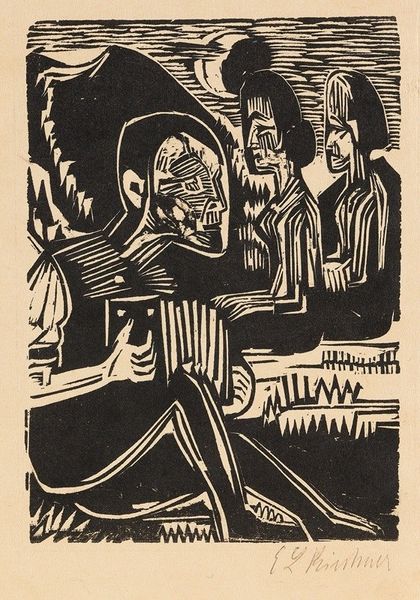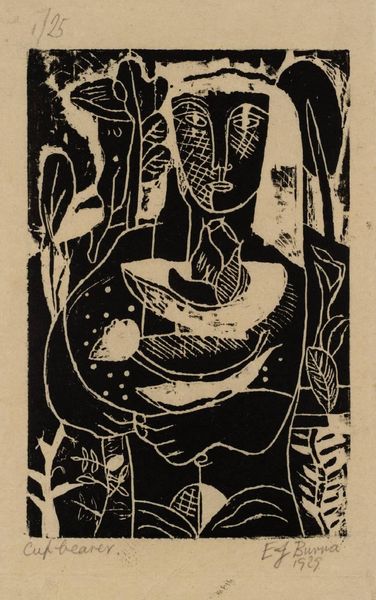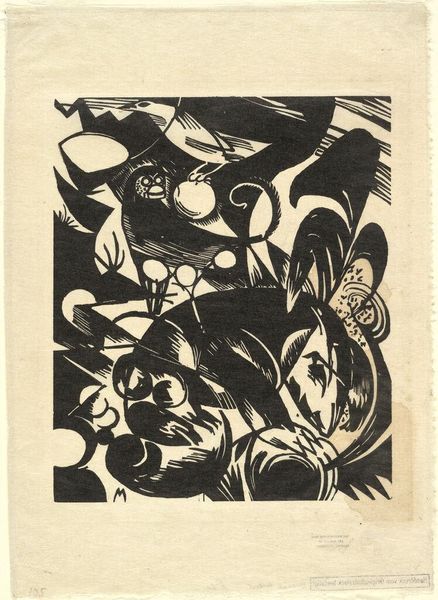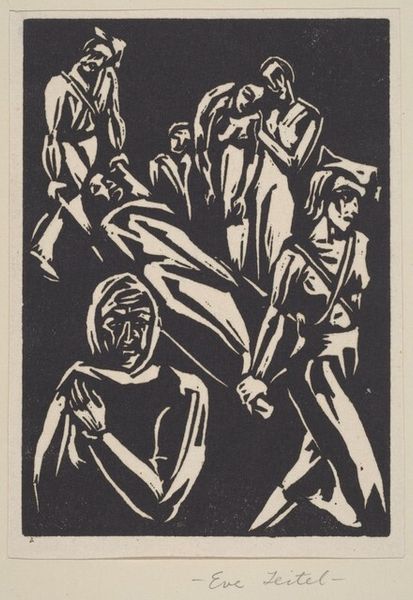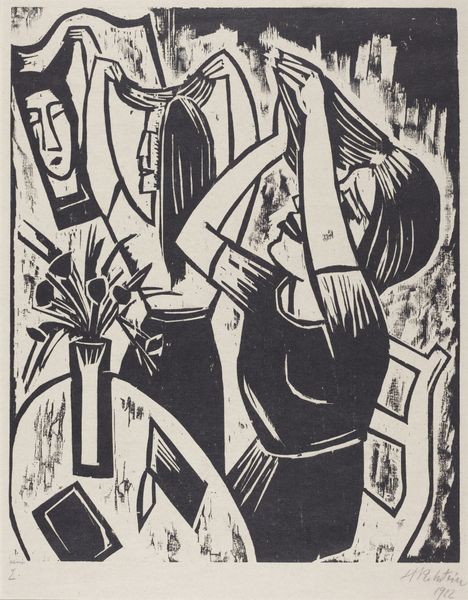
print, woodcut
#
portrait
# print
#
figuration
#
expressionism
#
woodcut
Dimensions: image: 22.7 × 15.2 cm (8 15/16 × 6 in.) sheet: 26.5 × 21.7 cm (10 7/16 × 8 9/16 in.)
Copyright: National Gallery of Art: CC0 1.0
Curator: Here we have Peter Krasnow's "Mother and Child," a woodcut print from 1929. The stark black and white contrast is immediately striking, isn't it? Editor: Yes, I agree. The intense juxtaposition definitely grabs your attention. The angular forms give the image a powerful, almost unsettling quality, which clashes with the expected sentimentality of the subject. Curator: As a woodcut, the piece speaks volumes about process and the labor involved. Each line, each shape, painstakingly carved away to leave only the image behind. Krasnow, as a Jewish immigrant in Los Angeles, lived through immense economic and social upheaval during the depression era. Could this bold image explore his complex experience in that environment, the labor and craftsmanship reflected the broader struggles and realities of its time? Editor: That's compelling. However, before delving into socioeconomic factors, let's consider the visual relationships. The artist creates a structured interplay between the black and white areas which emphasizes certain aspects and de-emphasizes others. Note how the faces, particularly the mother’s profile, is constructed from planes of sharp lines; it's geometric almost like Cubism but with this rough-hewn texture. It's emotionally charged through form itself. Curator: Absolutely, and I see those stylistic elements deeply embedded within the conditions of its creation. The German Expressionist movement had its origins among craft guilds as artists looked to both folk-art, to counter academic aesthetics, but the black and white design considerations for posters also had its influences on movements to come. What meaning did craft have within the artist's society? Editor: Agreed; its construction clearly contributes to its visual meaning. Let us examine this compositional element – note the way the child is nestled against the mother, almost an extension of her. Then, there is an odd and intrusive triangular feature looming in the background; this stark geometric contrast of black and white evokes anxieties about vulnerability. Curator: I would suggest that the way in which mass production techniques made artwork affordable had meaning too – perhaps both to the artist, and patron, and to subsequent readings by academics, just like our readings today. Krasnow originally intended to be a tailor and one wonders how that shaped his understanding of artistic skill and the material processes available. Editor: A very stimulating discussion, that certainly enriches our viewing of "Mother and Child,". Thank you. Curator: Indeed. Reflecting on the materiality alongside cultural contexts really does highlight how interconnected everything is.
Comments
No comments
Be the first to comment and join the conversation on the ultimate creative platform.
